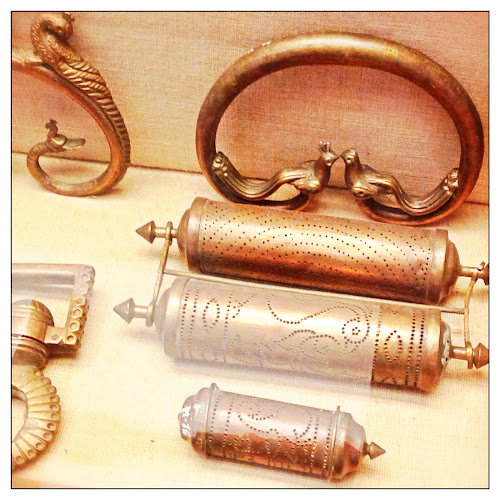In Pondicherry in the south of India, women decorate the ground in front of their house every morning with designs called kolams. They use a mixture of rice flour and pigment and use templates or work freehand. It was believed that it was important to always have a welcoming home, and the fact that creatures like birds, squirrels, and ants would eat the rice flour was a part of this idea of providing an inclusive environment (also Lakshmi, the goddess of posterity might show up!). As the day goes on the kolams are trampled and the artwork disappears and then the next morning the women sweep and wash the ground (sprinkling it with water) and reapply them, making a brand new design each day. It is important that every line is closed, to prevent evil spirits from entering. Women stand up, but bend over the entire time they create, and so it's considered to be good for digestion, reproductive organs, and a good form of morning exercise and stretching. Modern templates are made by using blue block-out on silk screen-like screens (round) or by punching holes in tins...a handful of rice flour goes in the tin and when the tin is tapped on the ground the pattern comes out. Fancy borders are made using tubes that have holes punched in them..traditionally they were made out of (clay or) tin but the ones I saw from Pondicherry were just thin lengths of PVC piping. The little tubes are packed with rice flour and then rolled on the ground to make patterns for the borders.
We could replicate the tin stencils by punching holes in sturdy paper plates. And thin cardboard tubes (the kind that come with wrapping paper) would be great for rolling borders. This could be a fun and meaningful school art project, if teams of children were to be assigned the front of the school from one day to the next. It's a nice step up from sidewalk chalk, and would also be a wonderful introduction to the idea of impermanence in artwork. Design and pattern suggestions can be found at http://www.ikolam.com/
Here are the stencils:
This is what it looks like when the rice flour is pressed through:







No comments:
Post a Comment